第18章 HOW LIBRARY WORK WITH CHILDREN HAS GROWN IN HARTFO
The Library Journal for February,1914,says:"One of the pleasantest features of 'Library week'at Lake George in 1913was the welcome given to Miss Hewins,that typical New England woman,whose sympathy with children and child life has made this relation of her public library work a type and model for all who have to do with children....Miss Hewins's paper was really a delightful bit of literary autobiography,and she has now happily acceded to a request from the Journal to fill out the outlines into a more complete record."Not long ago I went into the public library of a university town in England and established confidence by saying,"I see that Chivers does your binding,"whereupon the librarian invited me inside the railing.A boy ten or twelve years old was standing in a Napoleonic attitude,with his feet very far apart,before the fiction shelves,where the books were alphabetized under authors,but with apparently nothing to show him whether a story was a problem-novel or a tale for children.My thoughts went back many years to the days when I first became the librarian of a subion library in Hartford,where novels and children's stories were roughly arranged under the first letter of the title,and not by authors.There was a printed catalog,but without anything to indicate in what series or where in order of the series a story-book belonged,and it was impossible when a child had read one to find out what the next was except from the last page of the book itself or the advertisements in the back and they had often been torn out for convenient reference.
My technical equipment was some volunteer work in a town library,a little experience in buying for a Sunday-school library,and about a year in the Boston Athenaeum.The preparation that I had had for meeting children and young people in the library was,besides some years of teaching,a working knowledge of the books that had been read and re-read in a large family for twenty-five years,from Miss Edgeworth and Jacob Abbott,an old copy of "Aesop's fables,"Andersen,Grimm,Hawthorne,"The Arabian nights,"Mayne Reid's earlier innocent even if unscientific stories,down through "Tom Brown,""Alice in Wonderland,"Our Young Folks,the Riverside Magazine,"Little women,"to Scott,Dickens,Thackeray,George Eliot,Charlotte Bronte and Mrs.
Gaskell.These books were in the Hartford Young Men's Institute,but they were little read in comparison with the works of the "immortal four,"who were then writing series at the rate of two or more volumes a year--Optic,Alger,Castlemon and Martha Finley--and still refuse to be forgotten.The older girls demanded Ouida,a new name to me,but I read some of her novels before I had been in the library many weeks,and remember writing a letter to a daily paper giving an outline of the plot of one of them as a hint to fathers and mothers of what their schoolgirl daughters were reading.I think that there was something about boys,too,in the letter,and a plea for "Ivanhoe"and other books of knightly adventure.
The Young Men's Institute Library in Hartford was a survival from the days of subion libraries and lecture courses.The city had then a population of about fifty thousand,of whom some five or six hundred were subscribers to the library,paying three dollars for the use of one book at a time or five dollars for two,including admission to the periodical room.Hartford had a large number of Irish inhabitants,some Germans,a few of whom were intelligent and prosperous Jews,a few French Canadians,possibly still fewer Scandinavians.It was several years before the first persecution of the Russian and Polish Jews sent them to this country.In the year when I came,1875,there were forty-six boys and girls in the high school graduating class,all,from their names and what I know of some of them,apparently of English descent,except one whose name is Scotch.
The class which was graduated last June had about 650members on entering,and 250at the end of its course.Among the names are Italian,Hebrew,Swedish,Irish,German,Danish,Spanish,Bohemian,Armenian--the largest percentage from families not of English descent being Hebrew.
It is fair to say that at least half of the boys and girls of the earlier graduating class,or their families,had library subions,but little use of the library was recommended even by the high school teachers,and none by the teachers of the graded schools.How could there be?Five dollars is a large sum in most families,and children at that time had to read what they could get at home or from the Sunday-school libraries,which were no better nor worse than others of the period.
The first effort that I remember making for a better choice of books was showing the library president some volumes by Thomes,a writer for the older boys,whose stories were full of profanity and brutal vulgarity.There was no question about discarding them and some of Mayne Reid's books like "The scalp hunters"and "Lost Lenore,"which are much of the same type,very different from his earlier stories,and in a short time we did not renew books by some other authors,but let them die out,replacing them if possible by stories a little better,giving preference to those complete in themselves.